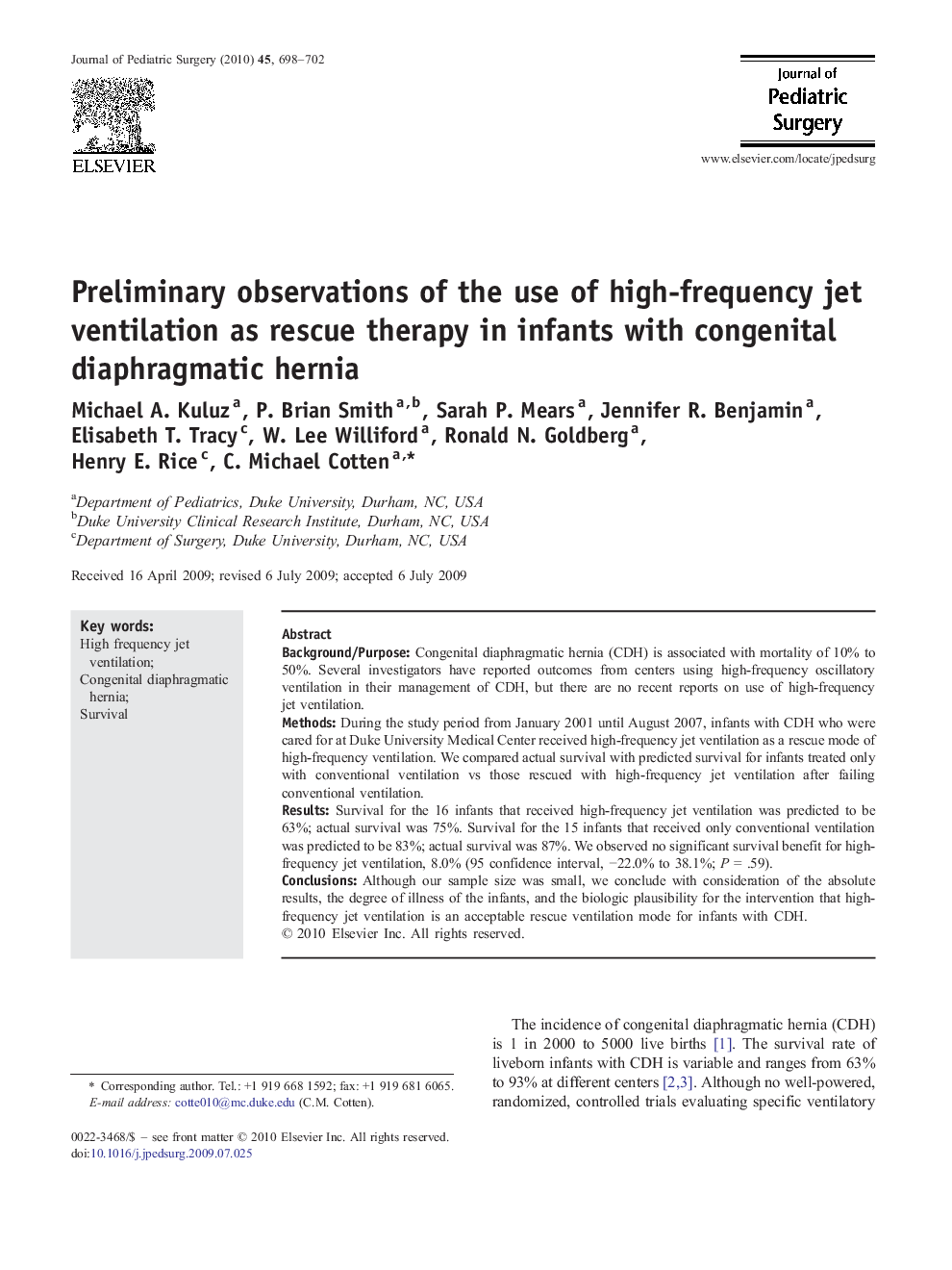| Article ID | Journal | Published Year | Pages | File Type |
|---|---|---|---|---|
| 4158433 | Journal of Pediatric Surgery | 2010 | 5 Pages |
Background/PurposeCongenital diaphragmatic hernia (CDH) is associated with mortality of 10% to 50%. Several investigators have reported outcomes from centers using high-frequency oscillatory ventilation in their management of CDH, but there are no recent reports on use of high-frequency jet ventilation.MethodsDuring the study period from January 2001 until August 2007, infants with CDH who were cared for at Duke University Medical Center received high-frequency jet ventilation as a rescue mode of high-frequency ventilation. We compared actual survival with predicted survival for infants treated only with conventional ventilation vs those rescued with high-frequency jet ventilation after failing conventional ventilation.ResultsSurvival for the 16 infants that received high-frequency jet ventilation was predicted to be 63%; actual survival was 75%. Survival for the 15 infants that received only conventional ventilation was predicted to be 83%; actual survival was 87%. We observed no significant survival benefit for high-frequency jet ventilation, 8.0% (95 confidence interval, −22.0% to 38.1%; P = .59).ConclusionsAlthough our sample size was small, we conclude with consideration of the absolute results, the degree of illness of the infants, and the biologic plausibility for the intervention that high-frequency jet ventilation is an acceptable rescue ventilation mode for infants with CDH.
